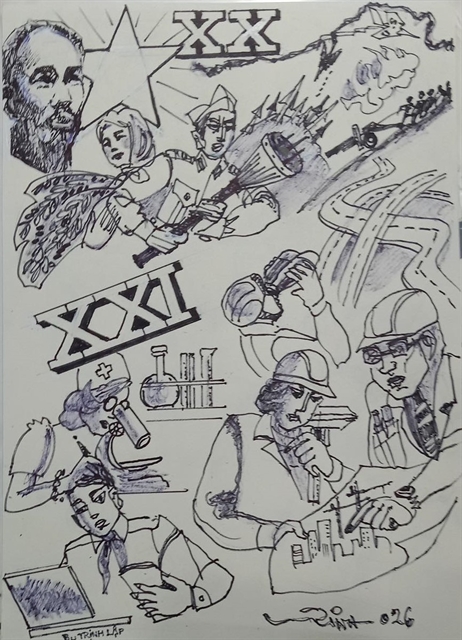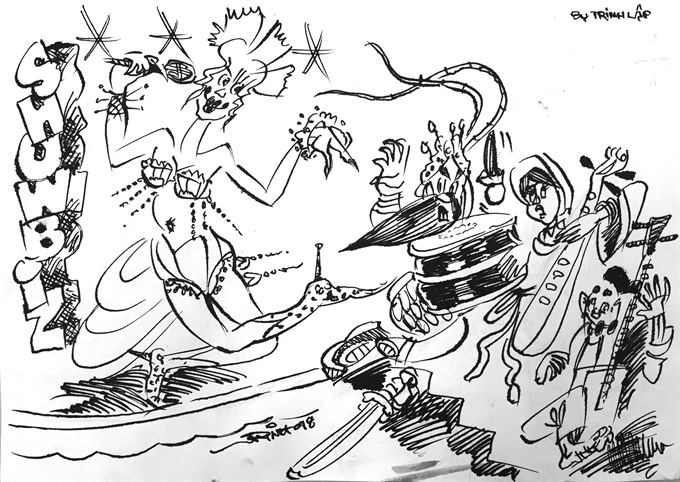 Talk Around Town
Talk Around Town

While classical art shows struggle to attract audiences, popular singers have no trouble selling out their shows even though their tickets are all very expensive.
 |
| Illustration by Trịnh Lập |
Bảo Hoa
I have a part-time job editing content for a website on arts and cultural events in Hà Nội. As one of the perks I sometimes get free tickets to concerts and art performances.
There are loads of cultural events in Việt Nam and free tickets are often up for grabs from family and friends. Although it’s always nice to get free stuff, this suggests that quality cultural events are not receiving due appreciation.
In November 2017, I was given four tickets for a piano recital by a young Vietnamese musician who had studied abroad for years. I was excited and thought my friends and I would be among the first to see the performance, but when we got there, there were stacks of tickets about to be distributed for free, although the organizers said that prices would cost from VNĐ100,000 (US$4.3) to VNĐ500,000 each.
Four months prior to that I was given free tickets to an art show titled “A Red River”, put together by some of the most talented, experienced and well-known artists in the country. I had just parked my motorbike outside the venue, when a ticket tout approached me and asked: “Have you got tickets? I’ve got some here. Want to buy?” When I got inside the venue, I found out that dozens of people had been given free tickets.
The two incidents puzzled me and made me wonder how the organizers had sold any tickets at all.
There has been an ongoing series of plays written by renowned Vietnamese playwright Lưu Quang Vũ. A friend of mine, who went to see five plays, said they were all open to the public for free.
“The Government covers the costs of the show, so the tickets are free,” she said. “Maybe it’s because they want to encourage people to see the plays.”
Since I believe all artists work hard to get to where they are and deserve to get paid for it, I oppose the “no-ticket-required, free-entrance” policy. A keen explorer of classical music myself, I buy tickets to see concerts, and the experiences I have had were so good they make me want to do it again.
Another thing that puzzled me is that while classical art shows struggle to attract audiences, popular singers have no trouble selling out their shows even though their tickets are all very expensive. In August 2017, pop star Đàm Vĩnh Hưng invested VNĐ9 billion ($387,000) throwing a concert marking 20 years of his music career. The ticket prices ranged from VNĐ1 to 5 million ($43-215), and he had no problem selling 2,000 tickets in four days.
Taking a quick look at the Hanoi Opera House’s website, you can see that tickets for pop music concerts are much more expensive than performances by classical artists. The highest price for the latter goes up to about only VNĐ700,000 ($30), while the former can reach VNĐ3 million ($129).
It would be inappropriate to compare the two markets, and I know there are a lot of factors that have to be taken into account when deciding on ticket prices, including the audience, operating and promotional costs, but the differences in ticket prices between these two genres points to a sad truth that classical shows remain unappealing to Vietnamese audiences.
It might be too much to mention a difference in cultures here, but I think if people give the “classy” stuff a chance, they may find it’s not as boring and unreachable as they think. — VNS




